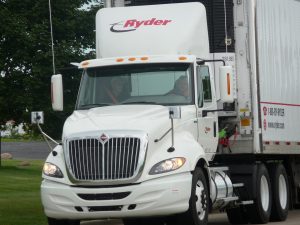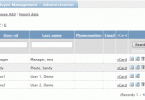 If you happen to be involved in a business with a shipping department or a vehicle fleet to manage, you’re likely familiar with some of the concerns that can come into play. Vehicle maintenance and driver management can be very big jobs, and unfortunately, there are significant safety issues as well.
If you happen to be involved in a business with a shipping department or a vehicle fleet to manage, you’re likely familiar with some of the concerns that can come into play. Vehicle maintenance and driver management can be very big jobs, and unfortunately, there are significant safety issues as well.
It’s not uncommon for fleet vehicles to be involved in dangerous and deadly crashes on the road, and one rundown of truck accident statistics from Driver Alert produced some very scary numbers. For instance, 34 percent of large truck-related accidents relevant to this survey occurred as a result of fatigue and 6.9 percent were determined to have resulted from driver inattention. This list goes on, ultimately painting a picture of an industry that’s in pretty serious need of some adjustments to keep drivers and trucks safe.
To be clear, this is not meant to highlight a driver problem, but one relating to industry and equipment. Just like an ordinary driver, anyone operating a fleet vehicle may be independently irresponsible. But the size of some of those statistics is more indicative of fundamental problems with what companies sometimes expect from fleet operators. Long, slow, endless hours on unfamiliar terrain would seem to almost inevitably lead to some of those troubling statistics.
One way that companies are looking to combat this problem is by removing driver responsibility altogether. Just this fall, Uber’s self-driving truck completed its first shipment, highlighting the fact that automated driving technology is becoming a reality. Some worry that this will wind up putting truckers out of business. However, we’ve also seen some designs that practically turn long hauls into luxury journeys for drivers, rather than removing them from the equation. Theoretically, a driver is still needed to perform certain tasks along the way, even if those tasks don’t include the moment-to-moment handling of the vehicle. It may be that in the coming years truck drivers will simply be able to kick back and relax while the vehicles do their jobs.
Automated vehicles aren’t quite here yet, and in the meantime, there’s a simpler solution that some businesses with large numbers of vehicles are starting to tune into. You may have heard about advanced GPS and WiFi sensors being put into fleet vehicles for purposes of route management and monitoring driver performance. Now, there’s an app (called “Networkfleet Driver”) that puts these applications to use for the actual drivers, rather than just for the people in charge of the fleets. Networkfleet describes it as a tool for maintaining safe driving habits while keeping track of routes and also maintaining open communication with management. The app is capable of laying out routing and schedules for a whole day and guiding drivers by voice, as well as keeping tabs on performance and notifying the driver if there are any unsafe issues. It can also log the service history of a vehicle with the aim of preventing any sudden problems or breakdowns.
The idea is to bridge the gap between external methods for making driving safer and actual driver activity. We can analyze statistics and daydream about automated vehicles all we like, but in the meantime, it’s still important to give drivers the tools they need to overcome common safety obstacles.





Getting aware about safety issues is always good. GPS Trackers are good way to keep an eye on transport. Thanks for sharing your views.